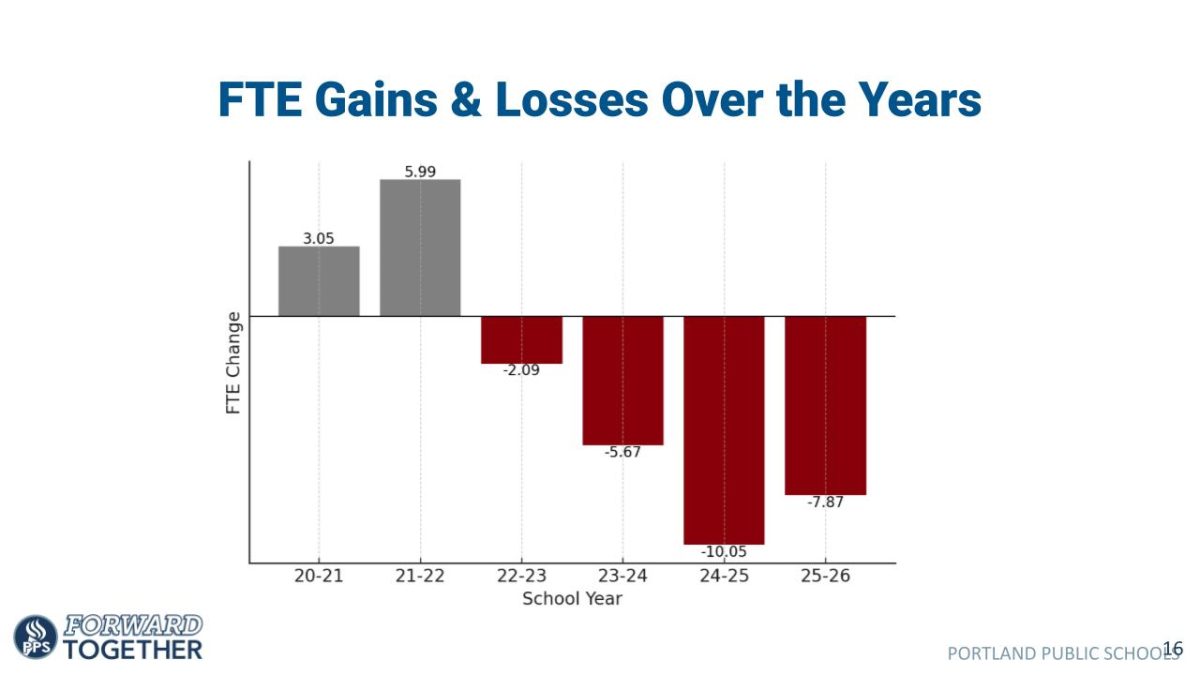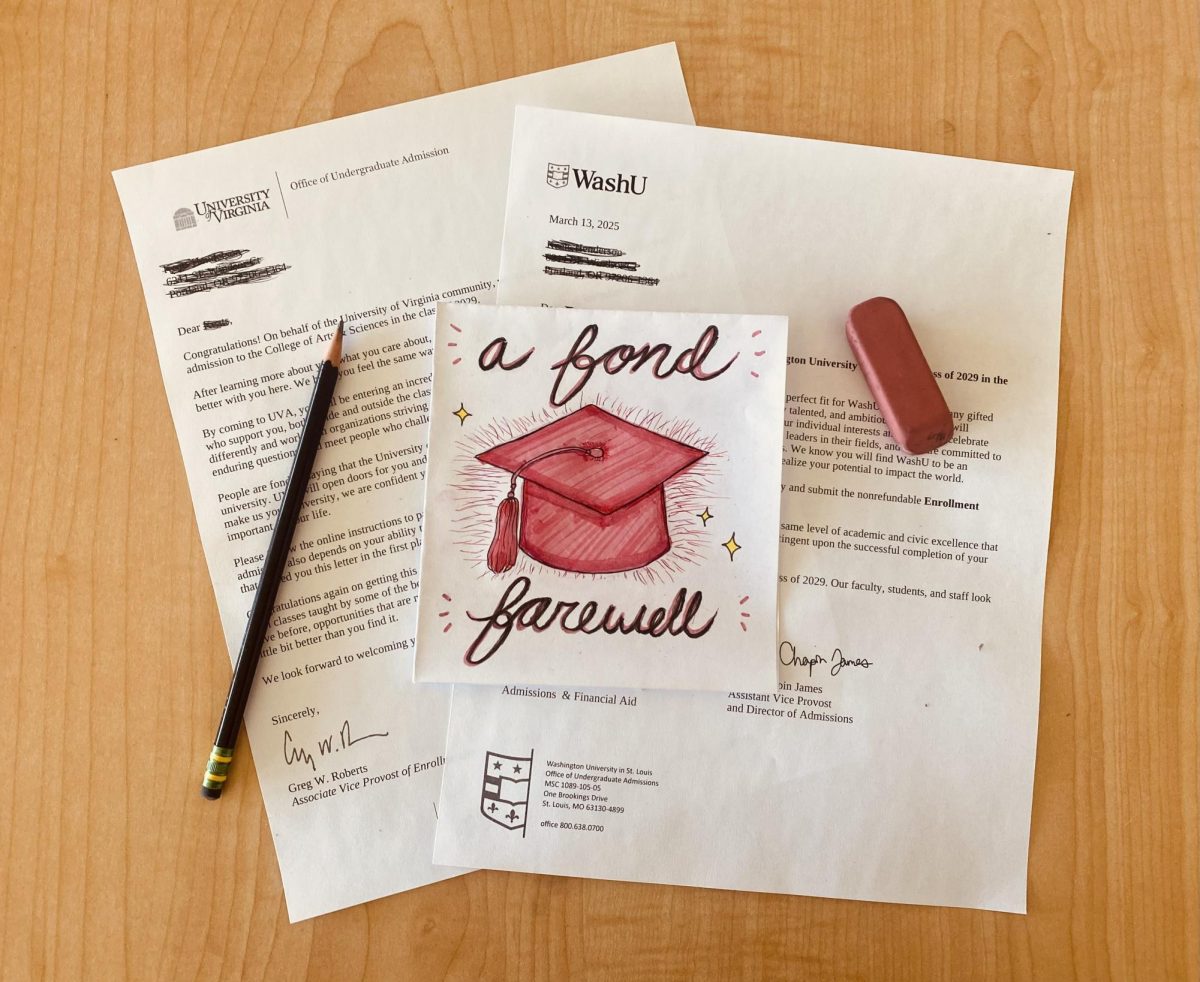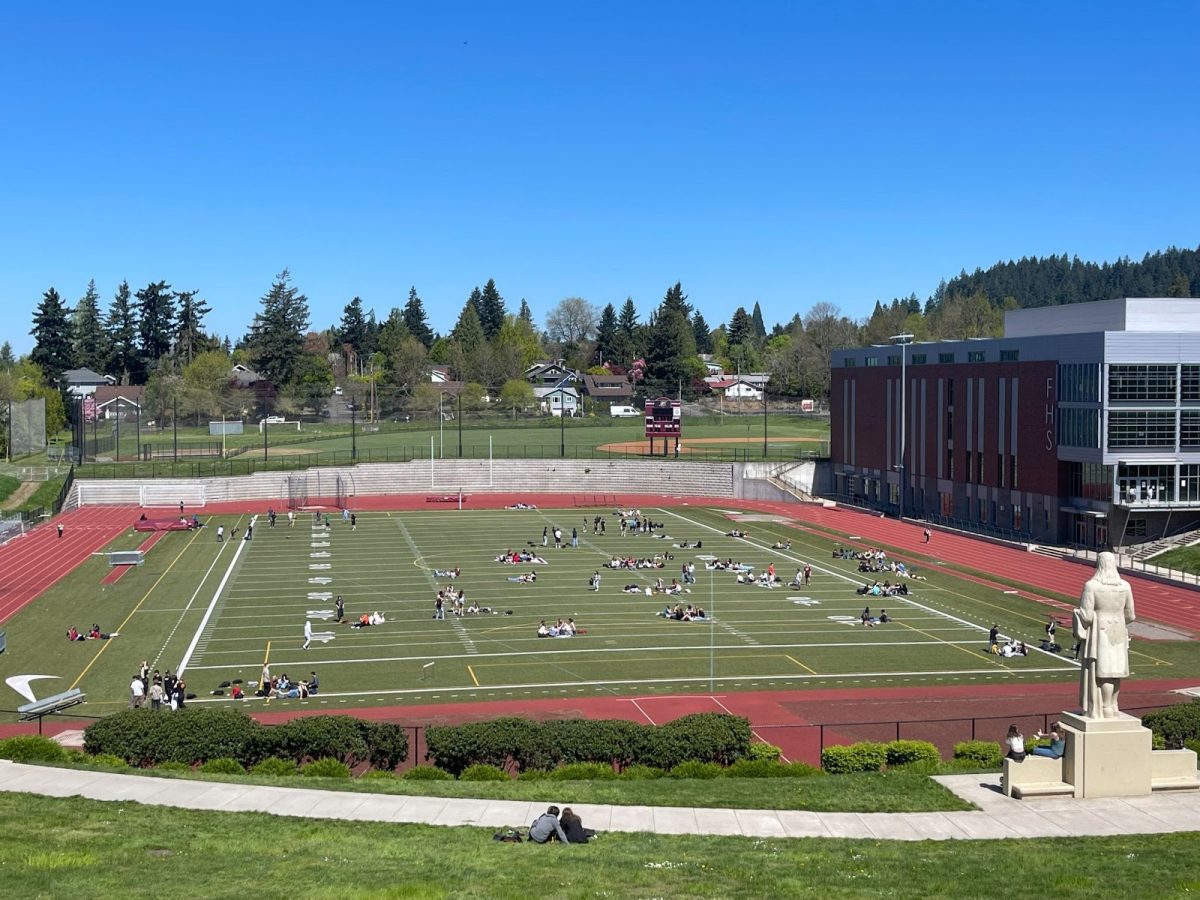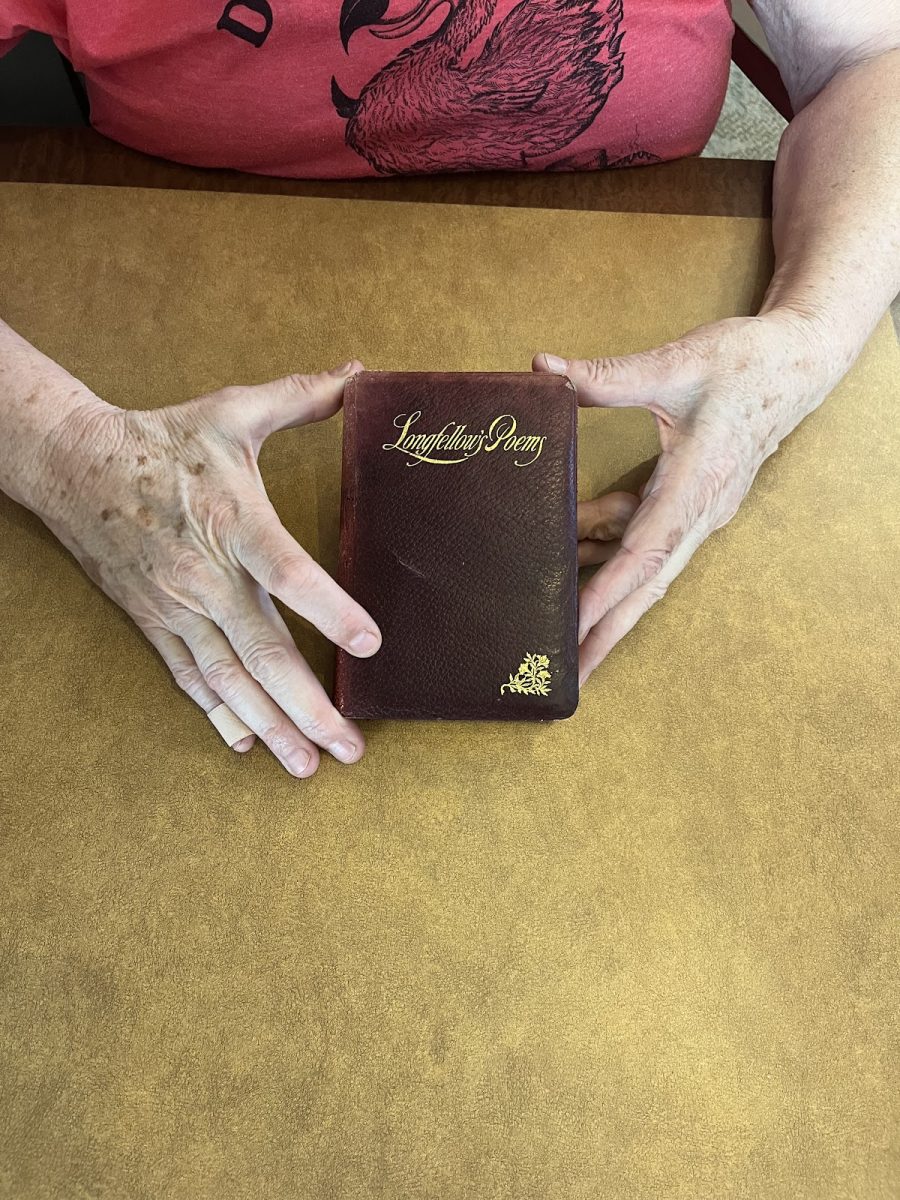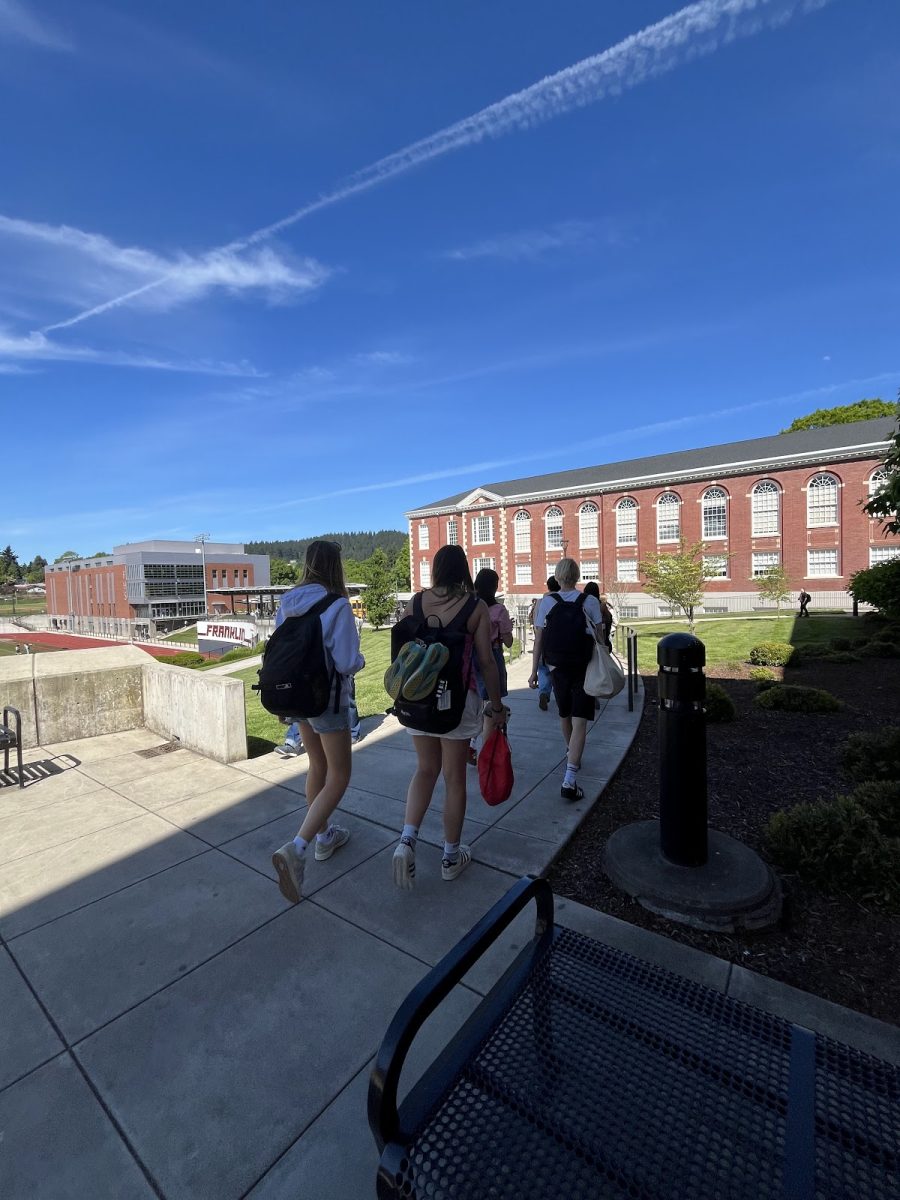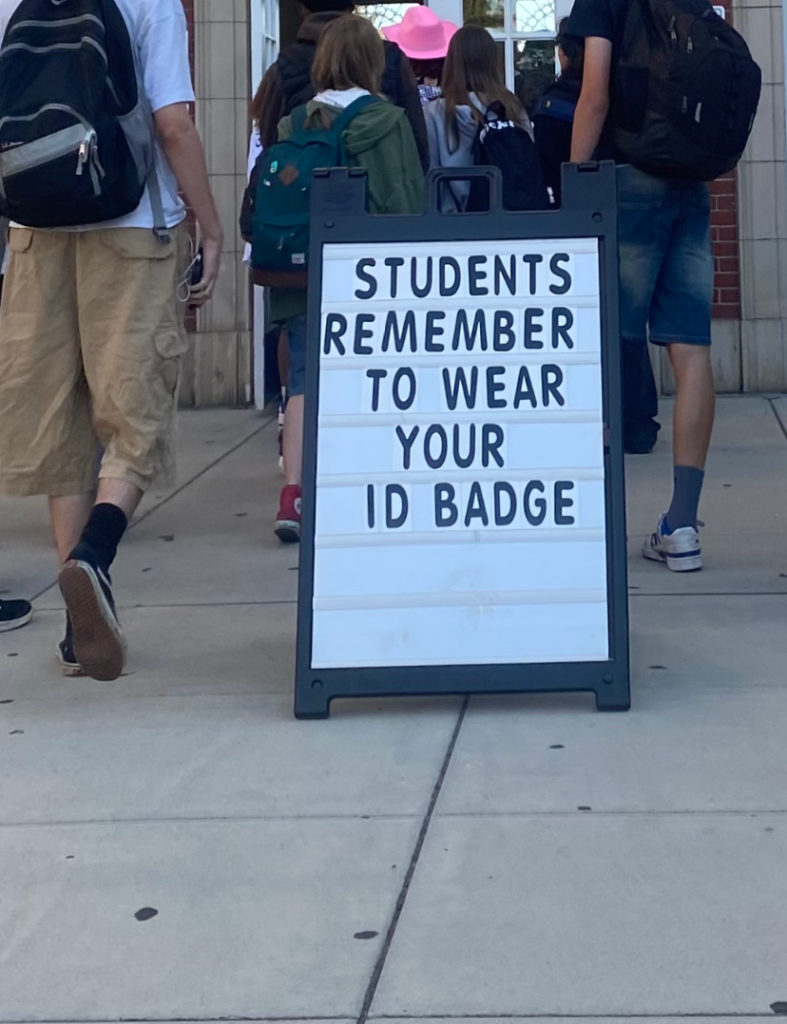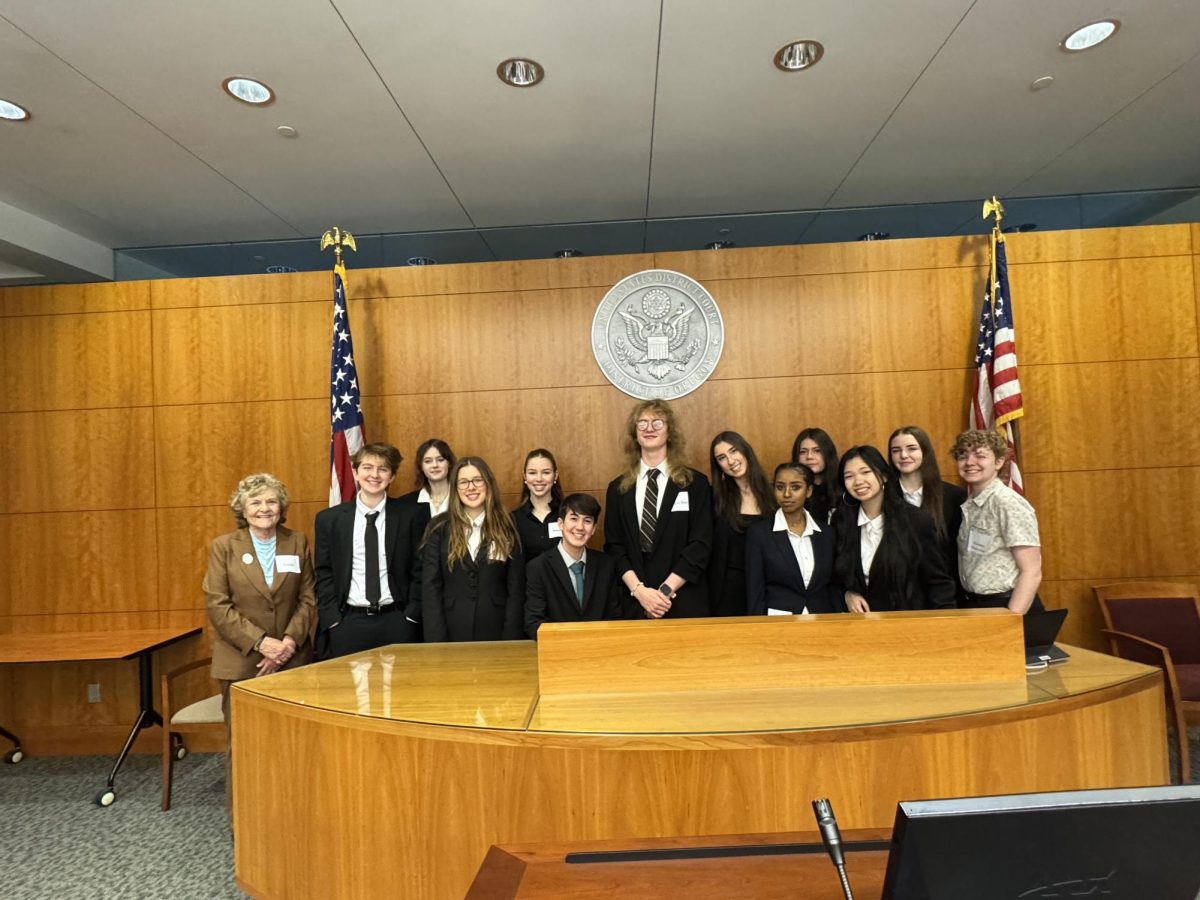
On Sept. 11, 2023, Franklin High School began requiring students to wear ID badges, following Portland Public Schools’ (PPS) new safety recommendations. As described by Franklin administration in a Remind message, “PPS has now mandated that all students in middle and high school will need to visibly wear ID cards during the school day going forward.”
This new rule took students, parents, and teachers alike by surprise. As Franklin High School Vice Principal Robyn Griffiths states, even “[staff] didn’t know until the end of the summer that [the rule] was going to be something [the district was] asking all schools to do.” Once they did, Griffiths explains that administrators were told, “all middle school and high schoolers [would] be required to wear ID badges to get into school, [during] school, and also for sporting [and other similar] events.” They were also told to implement the rule staggered from the start of the school year so all students would have a badge to wear.
For some students, this rule not only came as a shock but as an annoyance. There are questions about why this procedure has been introduced, and how it would be implemented. On Sept. 10 a petition against the rule began to circulate. Whether from a lack of information, lack of belief in its effect, or frustration over the time it adds to enter the building at the start of the day, “Discontinue the requirement of school IDs,” a petition on change.org,, aims to reach 200 signatures from students that attend Franklin and other PPS schools; as of Sept. 22 there are 152 signatures. The comments from students contain their opinions of why they are signing or what they think of the rule. One student claims it’s unnecessary and that it’ll just make students late to class, while other students on the petition claim they will not be wearing their ID or that it doesn’t help.
An anonymous student who had been interviewed about this cause, claims that it is a change that isn’t good or bad as it wouldn’t change her school experience. Another student adds that she “doesn’t care and it’s just unnecessary.” “It won’t affect or make a difference [to students]” insists another anonymous student, adding that he believes many people won’t change anything because they won’t listen to these adjustments. There is a common opinion throughout many Franklin students that required lanyards were unnecessary.
Though Griffiths agrees with the sentiment that students often don’t follow unenforced rules, she expresses hope that the rule will create a shift to “honor safety.” The rule, as Griffiths states, was meant to “make sure the students [who go to the present school] are the ones in the building … [with] the amount of things that have happened in the world with people getting into schools … and causing harm— we want to try to stop that as much as we can.”
According to an article written by Dr. Jon Franco, PPS’ chief of schools, the lanyards are one step to solving increased security concerns; “Superintendent Guadalupe Guerrero convened a safety and security task force to review existing systems which includes students.” This task force presented 13 recommendations to the Board of Education last May. The lanyards were an enforceable action, taking a step against outside threats. “It’s not for peer-to-peer violence,” Griffiths elaborates, “It’s for keeping people out of the building.” Along with the suggestions, PPS is now also piloting a “roving weapons detection system” at athletic events, to increase safety there as well.
Despite these steps, many agree that substantial work is needed for any efforts to be effective. “It’s not sustainable,” Griffiths states. “We don’t have the staff to cover [checking everyone’s badges every day].” Though staff was able to make a push and consistently check for the first two days, students have seen the efforts dwindle as staff has had to carry out other responsibilities.
Though this change might feel unhelpful to some, “It’s one small step,” Griffiths affirms. “It’s one little thing… on the spectrum of what we can do… [and if we] have a bunch of small things, it [can] become a bigger thing to help protect.” The implementation of IDs is an adjustment to get used to. The purpose, however, is to increase safety in a time where schools are more and more at risk. Griffiths summarizes this by saying, “The intention is to protect students and staff.” IDs are the latest effort.



